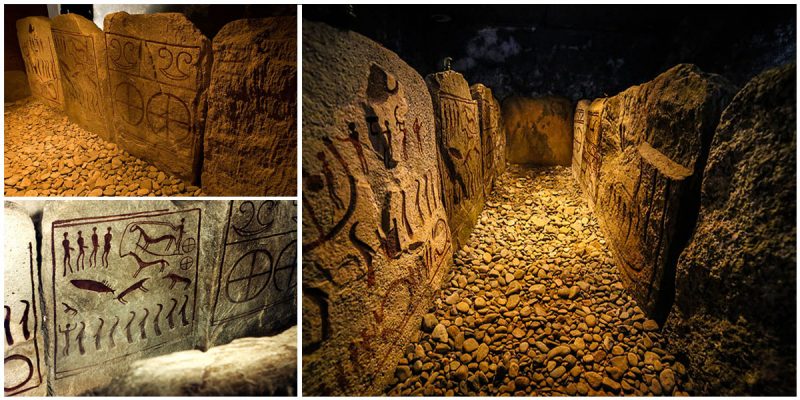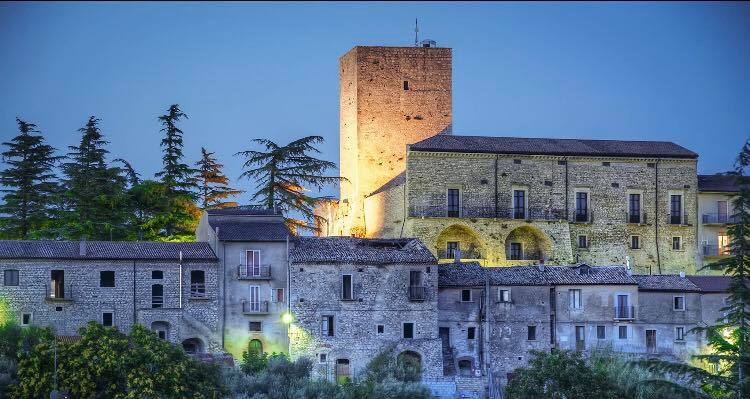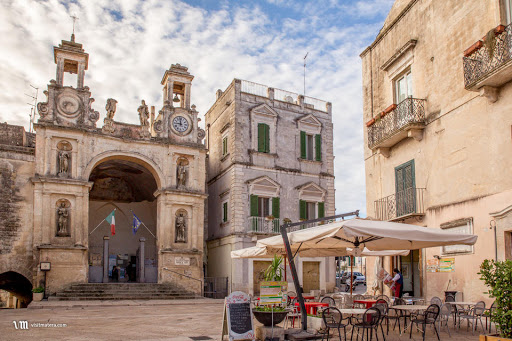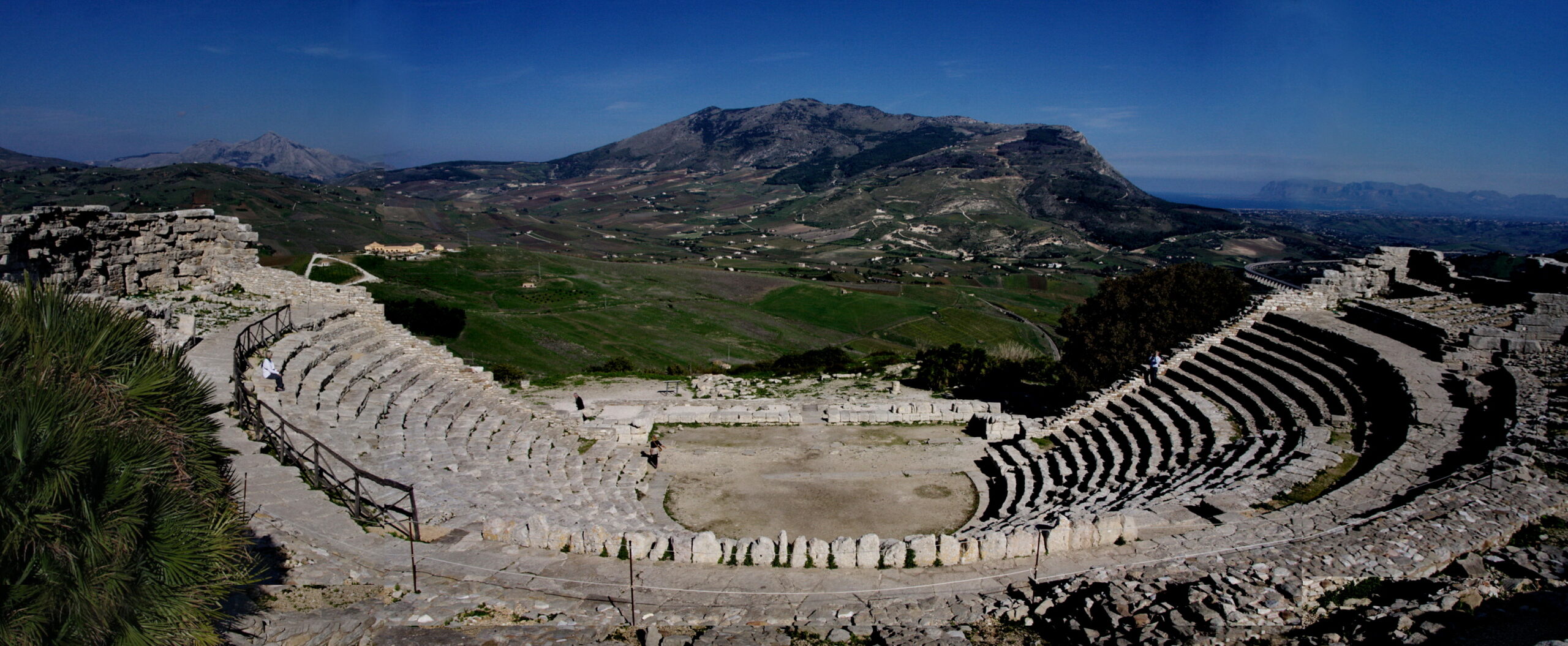The King’s Grave near Kivik in the southeastern portion of the Swedish province of Skåne is what remains of an unusually grand Nordic Bronze Age double burial c. 1400 BC.The site is located about 320 metres (1,000 ft) from the shore of the eastern coast of Scania in southernmost Sweden. In spite of the fact that the site has been used as a quarry, with its stones carried off for other uses, and that it was restored carelessly once it was known to be an ancient burial, these two burials are unique.
In both construction and in size—it is a circular site measuring 75 metres (250 ft) in diameter—this tomb differs from most European burials from the Bronze Age. Most importantly, the cists are adorned with petroglyphs. The images carved into the stones depict people, animals (including birds and fish), ships, lurs being played, symbols, and a chariot drawn by two horses and having four-spoked wheels.













